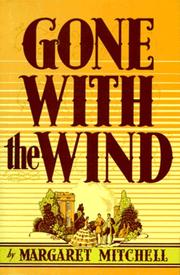
Spoilers!
I’ve been afraid of sharks ever since I watched Jaws
And nowhere is this more obvious than in the film Deep Blue Sea
But to start at the beginning, the premise of this film is that a scientist, Dr. Susan McAlester, is extracting serum from mako sharks’ brains to cure Alzheimer’s. As scientists always do in bad horror movies, though, she can’t leave well enough alone and so she genetically engineers sharks with bigger brains that produce more serum.
All together now : “She tampered in God’s domain.”
Naturally, that makes the sharks superintelligent and the scientist considerably less so. Seriously, who would do this without building in some kind of failsafe mechanism, like the dinosaurs in Jurassic Park
I did like Aquatica, the research facility out in the midst of the ocean. Communications tower, undersea labs, a huge pool for the sharks, security cameras, crawlways and so on… this place could have been used to tell a much better story.
This one, though, is dead in the water. Take the sharks, another CGI creation that had the potential to be far more. In Jaws, one ordinary shark was enough. This film multiplies that by three and makes them superintelligent too. One shark causes a helicopter to crash, while another turns on an oven when the cook is hiding inside (one of the few good scenes). And while they don’t yet understand the concept of electricity, they’re real good at playing keepaway.
But even their murderous nature is a predictable trope. Why is it that any time an animal becomes intelligent, that flips a switch to either HELP HUMANS (if the animal is a dog or a dolphin) or KILL HUMANS (if the animal is anything else)? The sharks would have been so much more fascinating if they had had their own non-human-focused agenda – or if escape was more important to them than swimming into narrow little corridors looking for humans to eat.
Ah, the corridor scenes. Yes, it’s very suspenseful when you’re wading through waist-deep water in a long corridor, and you look back to see a fin rippling towards you.
Of course, then you wonder just how tiny this shark is, if it’s perfectly at home in water that’s three feet deep – not to mention filthy and full of floating or submerged debris. There was probably a reason that the Jaws attacks took place in the ocean, rather than in, say, a swimming pool.
Finally there’s the heroine. Other than the stereotype of the mad scientist, she has so little personality and affect that she seems in need of that magically fast-acting brain juice herself. And since she caused the whole mess, I expected her to be eaten by the sharks, but she survives until the end and then sacrifices herself in a completely needless gesture. If the last surviving shark will abandon its plans of escape and race back into danger the moment it smells her blood (so much for superintelligence), why does she need to cut herself and leap into the water? She could have held her cut hand over the edge and pushed a heavy piece of debris in.
But by then the audience was probably sick of her. The two surviving characters certainly were – a few minutes later, after the last shark audibly chomps her and dies, they lie back and chuckle in relief. I know how you feel, guys. The appearance of the closing credits was the best part of this film.







 I would eventually have bought myself one, but there are some books ahead of it on my to-obtain list - books that I haven't read twenty times over. So I was surprised and thrilled when a friend gave me a copy (she also gave me a Transformer, but GWTW edged that out).
I would eventually have bought myself one, but there are some books ahead of it on my to-obtain list - books that I haven't read twenty times over. So I was surprised and thrilled when a friend gave me a copy (she also gave me a Transformer, but GWTW edged that out).









